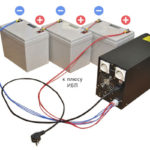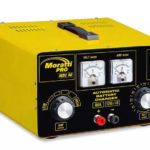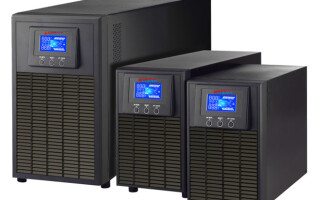Gas boilers in some cases are the only and indispensable source of heating water and heat in private homes and cottages. If there is an unexpected power outage (especially in winter), the owners have serious problems - it becomes banal cold in the house. However, uninterruptible power supplies (hereinafter referred to as UPSs) for gas boilers are designed to solve this problem. When the main voltage is switched off, these devices can still provide electricity for a long time gas heating equipment in the house, as well as ventilation devices.
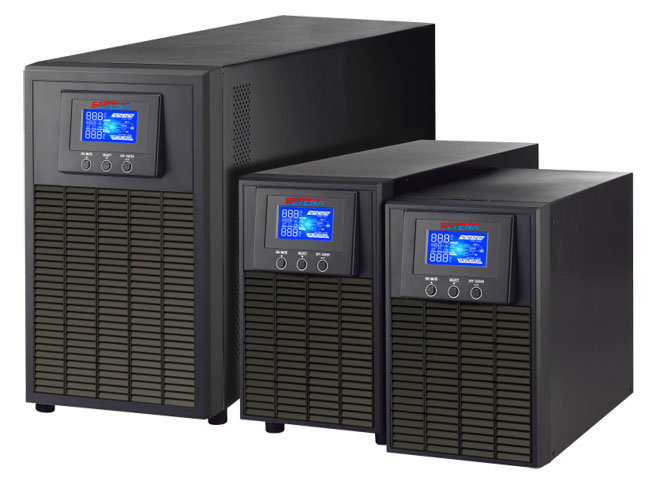
Contents
The need for an UPS for heating boilers
The topic of the importance of backup power devices for a private home has already been touched on above. It makes no sense to deny it, because power outages are commonplace in private homes. It is no secret that modern gas boilers need a constant current source, without which its work will simply stop.
In addition, the parts of gas boilers are sensitive to voltage parameters, which can periodically drop. Because of this, the boiler can either work intermittently or stop turning on at all. However, all problems with electricity and voltage fluctuations will be solved by the UPS.
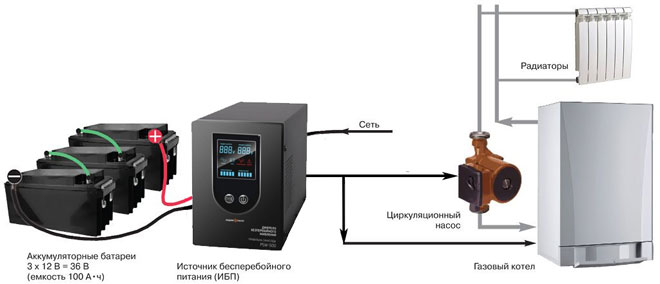
The list of benefits of installing a UPS is as follows:
- protection against power surges. Remember, buying a UPS will cost much less than replacing a burned-out electric boiler board;
- ease of installation (no special skills required);
- automatic control over the parameters of the power grid;
- Long service life - up to 7 years;
- do not require additional service;
- noiseless operation.
ATTENTION! At too low temperatures, stopping the operation of the gas boiler can cause burst pipes close to the street. A UPS can help you avoid this trouble as well.
Types of UPSs
To date, there are three main types of uninterruptible power supplies on the market - linear, linear-interactive and devices with double conversion.
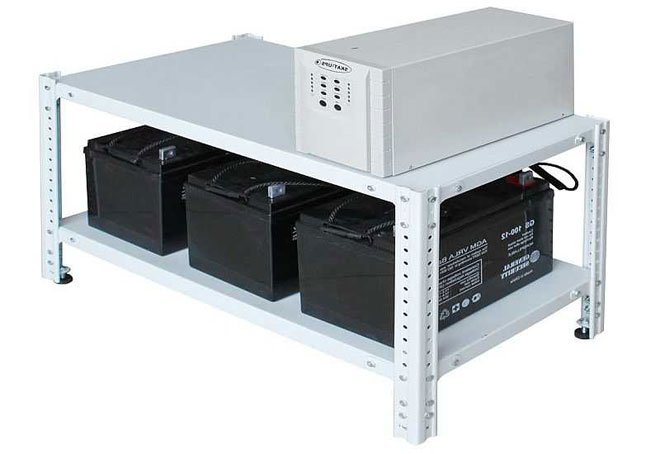
Linear
Linear devices (otherwise known as standby or off-line) - the simplest and, accordingly, the most budgetary. The design of such UPS does not use voltage regulators.
In fact, such a UPS is an ordinary "intermediary", because it transmits current with the same characteristics on the input and output. Linear devices have a function of emergency power outage and switching to battery operation if the light is abruptly cut off.
Batteries in such models usually have a capacity of 5-10Ah. This is enough to keep the gas boiler running from 10 to 30 minutes after a power outage. The main function of linear UPS is to prevent instantaneous shutdown of gas equipment. This gives the owner the peace of mind to turn the boiler off manually without causing any damage.
Advantages of linear units:
- quietness;
- high efficiency when connected to the network;
- low cost.
Disadvantages:
- It takes 4-12 minutes to switch to battery;
- voltage and current characteristics can not be adjusted;
- weak battery.
ATTENTION! Some models of line UPS have an option of installing an external battery. Thanks to it the autonomous operation time of the device increases.
Line-interactive .
UPS of this type differ from linear UPSs as they are equipped with an integrated stabilizer. If the linear UPS start working from the battery even with small input voltage spikes, the linear-interactive ones, thanks to the stabilizer, can operate at very large fluctuations. Accordingly, they are considered more reliable.
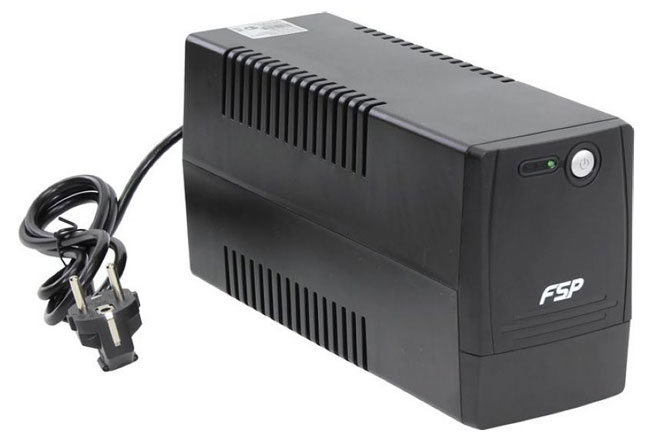
Advantages:
- the stabilizer adjusts the voltage in the network;
- long operating time;
- relatively low cost.
Disadvantages:
- Spends quite a bit of time to switch to standby;
- When working on the mains there is no correction of the output voltage shape.
Double-conversion
The UPS with a double-conversion system (other names are online or inverter) differs significantly from the first two types. This unit converts alternating current to direct current and then performs a secondary conversion of direct to alternating current. The battery connected to the input of the second inverter is then charged by the reduced DC voltage.
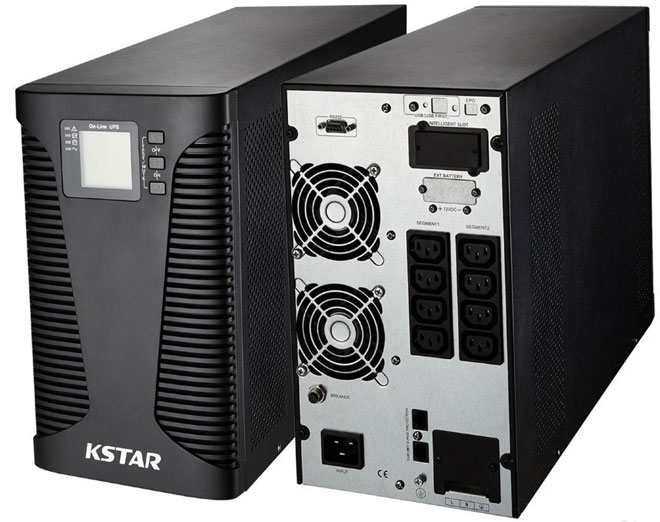
If the mains voltage fails, no time is wasted on connecting the battery - it is constantly on standby (hence the name "online").
A double-conversion UPS has the following advantages:
- Near-perfect sine wave output;
- instantaneous backup power;
- voltage and frequency stabilization.
There are also a couple of minuses:
- high price;
- low efficiency (because the device is constantly working).
How to choose a UPS for a gas boiler?
Power calculation
The power consumed by the gas boiler is the sum of the power consumption of the electronics unit, the power of the pump and the cooling fan (if any). At the same time in the certificate of the unit may indicate only the thermal power in watts.
The capacity of the UPS for boilers is calculated by the formula: A=B/C*D, where:
- A - the power of the backup power supply;
- B - nameplate power of the equipment in watts;
- C - factor 0.7 for the reactive load;
- D - three times the reserve for starting current.
Selection of batteries for the UPS
Batteries of different capacities are available for backup power devices. On some units, as mentioned above, you can connect an external battery, which allows longer operation in emergency mode. The greater the battery capacity, the more time the gas boiler can operate without electricity. Accordingly, as the capacity increases, so does the price of the device.
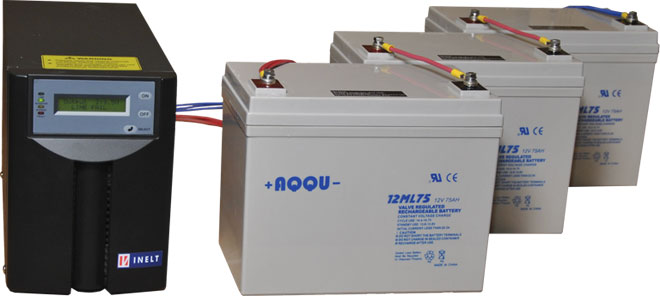
If an external battery can be connected to the UPS, it is important to know the high charging current limit specified in the documentation. Multiply this figure by 10 - and you get the capacity of the battery that can be charged from this device.
PLEASE NOTE! Undercharging a battery will shorten its service life. Avoid this.
The operating time of the UPS can be calculated by a simple formula. Multiply the capacity of the battery by its voltage and divide the result by the total power of the load. For example, if the device used a 12 V battery capacity of 75 A / h and the total power of all equipment - 200 W, then the standby time will be 4.5 hours: 75 * 12/200 = 4.5.
| Boiler power | Battery capacity, A/h | |||||||||
|---|---|---|---|---|---|---|---|---|---|---|
| W | A/h | A/hr | A/hr | A/hr | A/hr | A/hr | A/hr | A/hr | A/h | A/h |
| 7 | 18 | 33 | 55 | 75 | 100 | 120 | 150 | 180 | 200 | |
| Boiler run time, h | ||||||||||
| 30 | 2,2 | 5,8 | 10,6 | 17,6 | 24 | 32 | 38,4 | 48 | 57,6 | 64 |
| 80 | 0,84 | 2,2 | 4 | 6,6 | 9 | 12 | 14,4 | 18 | 21,6 | 24 |
| 100 | 0,7 | 1,7 | 3,2 | 5,3 | 7,2 | 9,6 | 11,5 | 14,4 | 17,3 | 19,2 |
| 120 | 0,6 | 1,5 | 2,7 | 4,4 | 6 | 8 | 9,6 | 12 | 14,4 | 16 |
| 145 | 0,5 | 1,2 | 2,2 | 3,6 | 5 | 6,6 | 8 | 10 | 12 | 13,3 |
| 180 | 0,4 | 1 | 1,8 | 3 | 4 | 5,3 | 6,4 | 8 | 9,6 | 10,7 |
| 200 | 0,4 | 0,8 | 1,6 | 2,6 | 3,6 | 4,8 | 5,8 | 7,2 | 8,7 | 9,6 |
| 250 | 0,3 | 0,7 | 1,3 | 2,1 | 2,9 | 3,9 | 4,7 | 5,8 | 7 | 7,7 |
| 350 | 0,2 | 0,5 | 0,9 | 1,5 | 2,1 | 2,8 | 3,3 | 4,1 | 4,9 | 5,5 |
| 400 | 0,2 | 0,4 | 0,8 | 1,3 | 1,8 | 2,4 | 2,9 | 3,6 | 4,3 | 4,8 |
| 500 | 0,1 | 0,3 | 0,6 | 1,1 | 1,5 | 1,9 | 2,3 | 2,9 | 3,5 | 3,9 |
Batteries can be connected both in series and in parallel. In the first case, the capacity of the device does not change, and the voltage is added. In the second case, it is the opposite.
If you have decided to use car batteries together with the UPS for the sake of saving money, reject this idea at once. If connected incorrectly, the uninterruptible power supply will fail, and no one will change it under warranty (even if it is still valid).
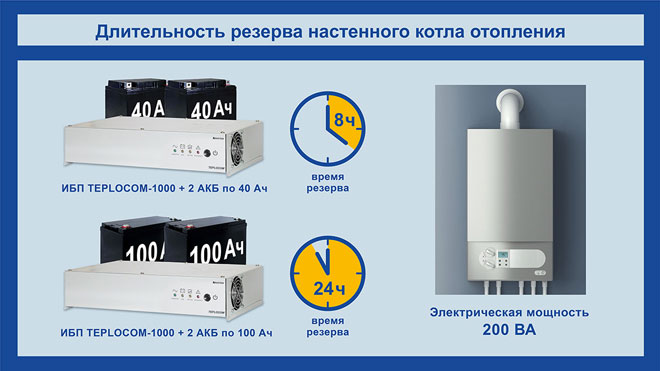
It is no secret that the batteries are warm when they work. Therefore, you should not heat them additionally against each other. When connecting several such devices, take care that there is an air gap between them. Also do not keep batteries near heat sources (like heaters) or at very low temperatures - it will lead to their rapid discharge.
Installation location
Uninterruptible power supplies for gas boilers should be installed indoors next to the heating system. Like batteries, the UPS itself does not like strong heat or cold, so you need to create optimal conditions (room temperature) in the room for its operation.
It is better to place the device near the sockets. If the device is small, you can not hang it on the wall, but simply put it on a shelf. At the same time, the ventilation holes must remain open.
The minimum distance from the gas pipes to the outlets, including the UPS, should not be less than 0.5 meter.
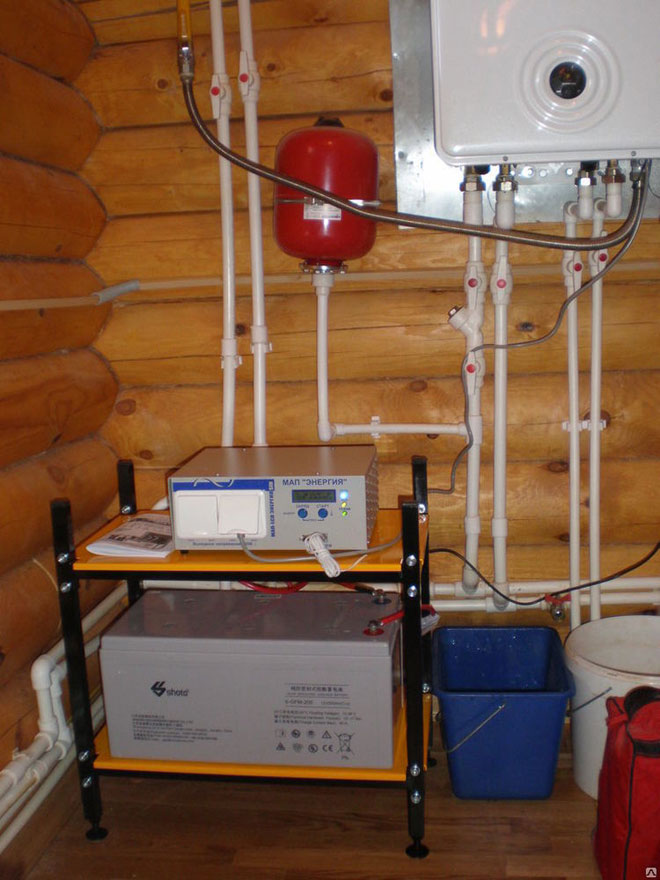
Do you need a stabilizer if you have a UPS?
An uninterruptible power supply is a useful and functional device, but it will not be the salvation from all the troubles, if the house has a low quality input voltage. Not all UPS models are capable of "pulling" low voltage (less than 170-180V).
If your home does have serious and constant problems with the input voltage (it is less than 200 V), you still have to install a normal inverter stabilizer at the input. Otherwise, the gas boiler will be powered only from the batteries, which will take away a significant part of their operating life.
The best UPS for a gas boiler
When choosing uninterruptible power supply for the boiler, it is recommended to give preference to proven companies that have earned the trust of buyers by producing reliable products. Equipment on the gas is potentially dangerous, so you should not save on its uninterrupted operation. A UPS on your boiler can help prevent gassing, flame out, or even an explosion when the grid goes down or sags.
Powercom VGS 1500XL
This is an interactive uninterruptible power supply with double voltage conversion. The output power is 1350 W. Full and half load of the device is possible for 4 and 15 minutes respectively.
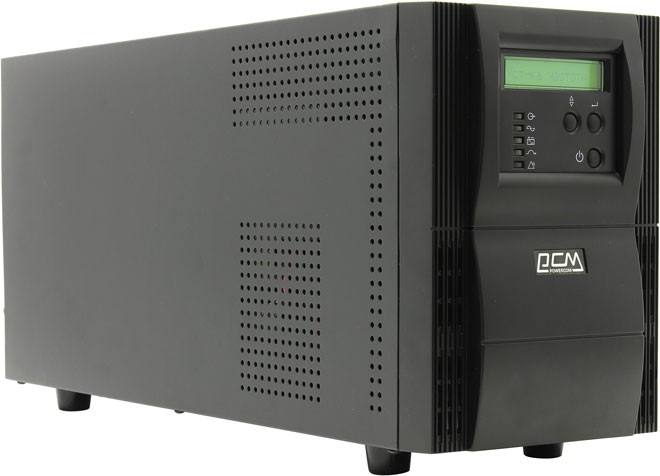
There is a possibility of battery replacement, even during operation. All data is displayed on the LCD screen. The device is immune to external factors of the network. During operation it does not make much noise. Among the disadvantages are only the need to replace the batteries every 5-6 years.
P-Com Pro 3H
Quite powerful variety of UPS for the gas boiler - 800 W. This is an interactive device, its operating time on a load of 100 watts - up to 40 minutes. Full load is available within 5 minutes - this will allow you to complete the work of the device without unnecessary nerves.
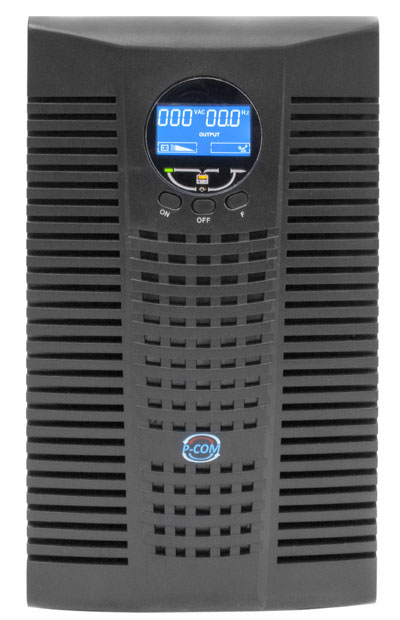
The device provides full protection against mains instability. Due to the 8 batteries it can work for several hours without electricity. The disadvantages are the considerable cost of the device itself and the need for periodic replacement of the battery, which are also not cheap.
INELT Monolith K 1000 LT
This is a UPS with a double conversion system. Thanks to the device, the boiler will be able to work for quite a long time without the mains (up to 15 hours, depending on the capacity of the battery). To this unit you can connect a battery with a capacity of up to 150 A / h, it does not have built-in batteries.
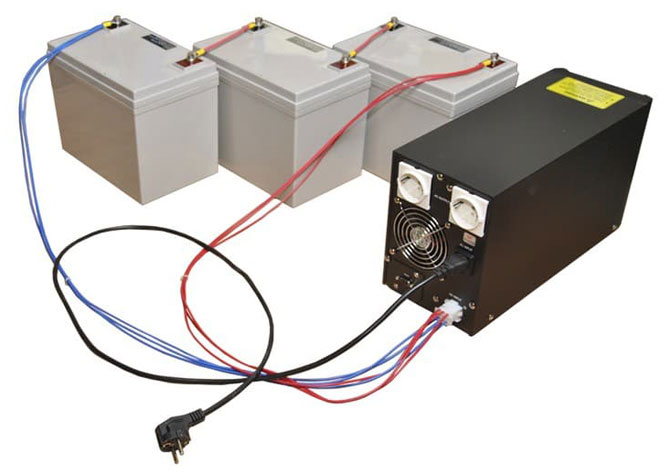
Stil VoltGuarg HT1101L
This is another UPS with a double conversion system. The single-phase input and output are rated for 1 kVA of equipment. The output voltage is 220V.
Note that the kit does not include a battery. An external battery must be connected to this UPS. Stil VoltGuarg HT1101L is equipped with short circuit and battery discharge protection.
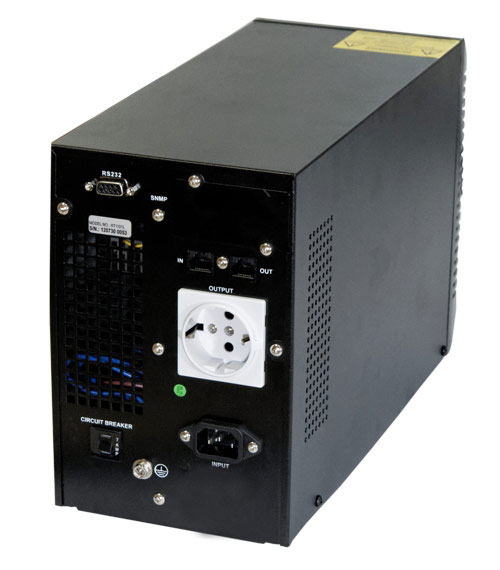
Tips for Using the UPS
- The room temperature and humidity should be as specified in the documentation. The optimum temperature for operation of the device is 20-25 °C.
- Do not expose the room to aggressive chemical vapors or liquids that can easily be ignited.
- The use of surge protectors and T-switches at the UPS output is undesirable.
- All equipment must be grounded.
- The UPS must be connected to the boiler using cables with an appropriate cross-section.
To summarize, it is safe to say that an uninterruptible power supply - an extremely necessary thing in the house with a gas boiler. It is better to choose online models, especially if you do not have an additional stabilizer for linear or linear-interactive devices. It is important to choose the right type of battery for the UPS, as well as the place for its installation, where there should be comfortable conditions for operation.
Related articles:
